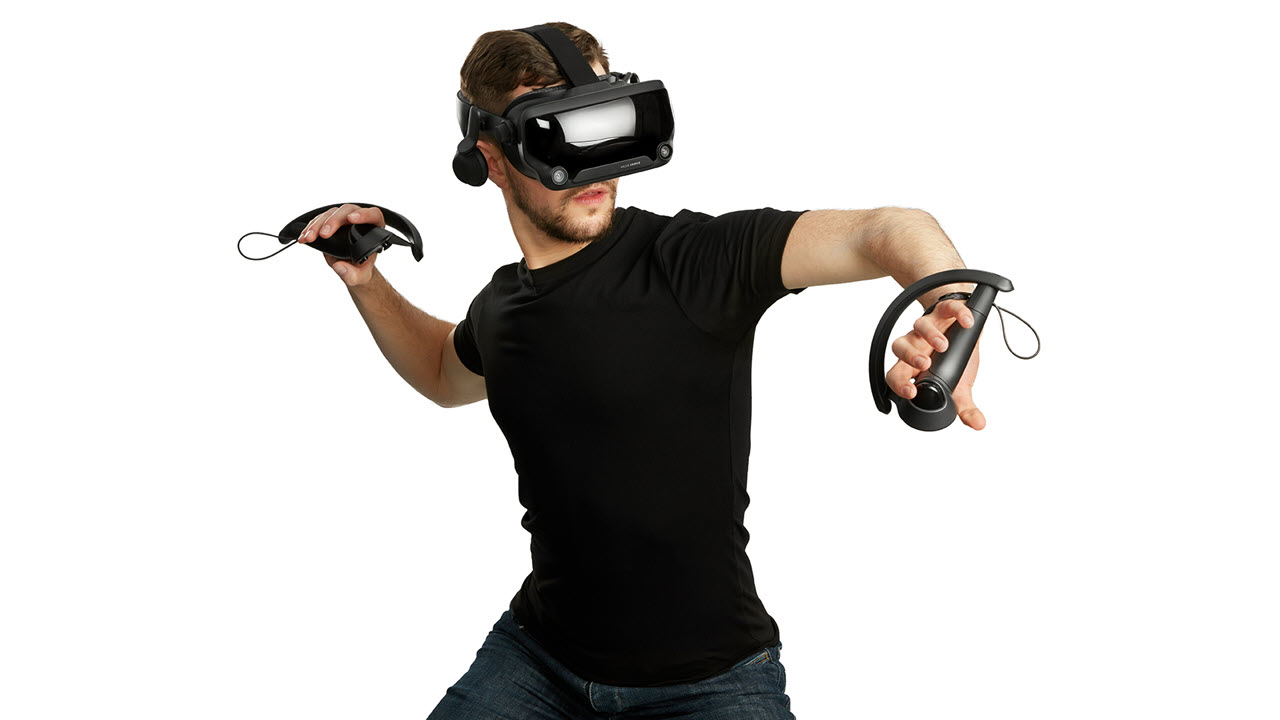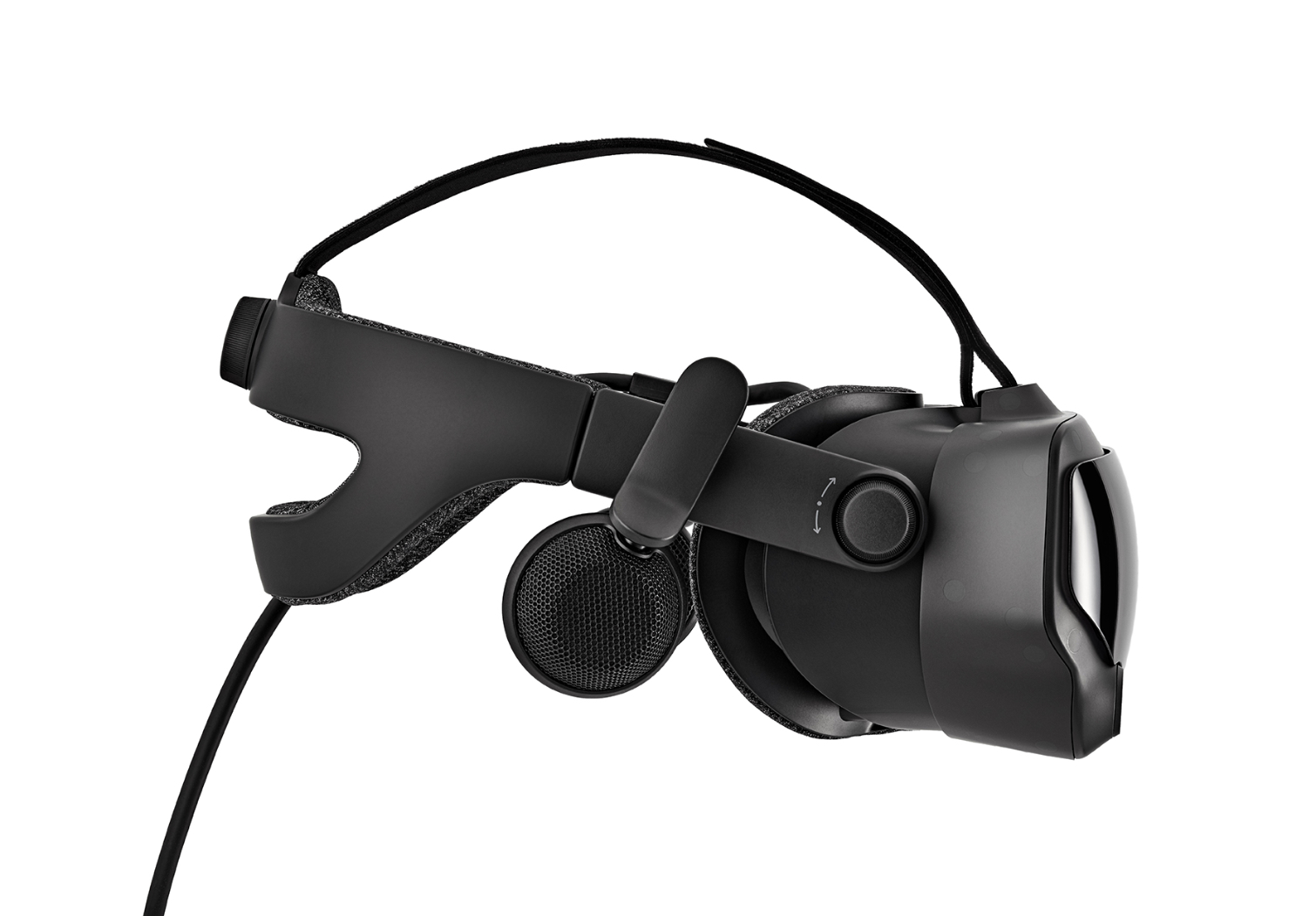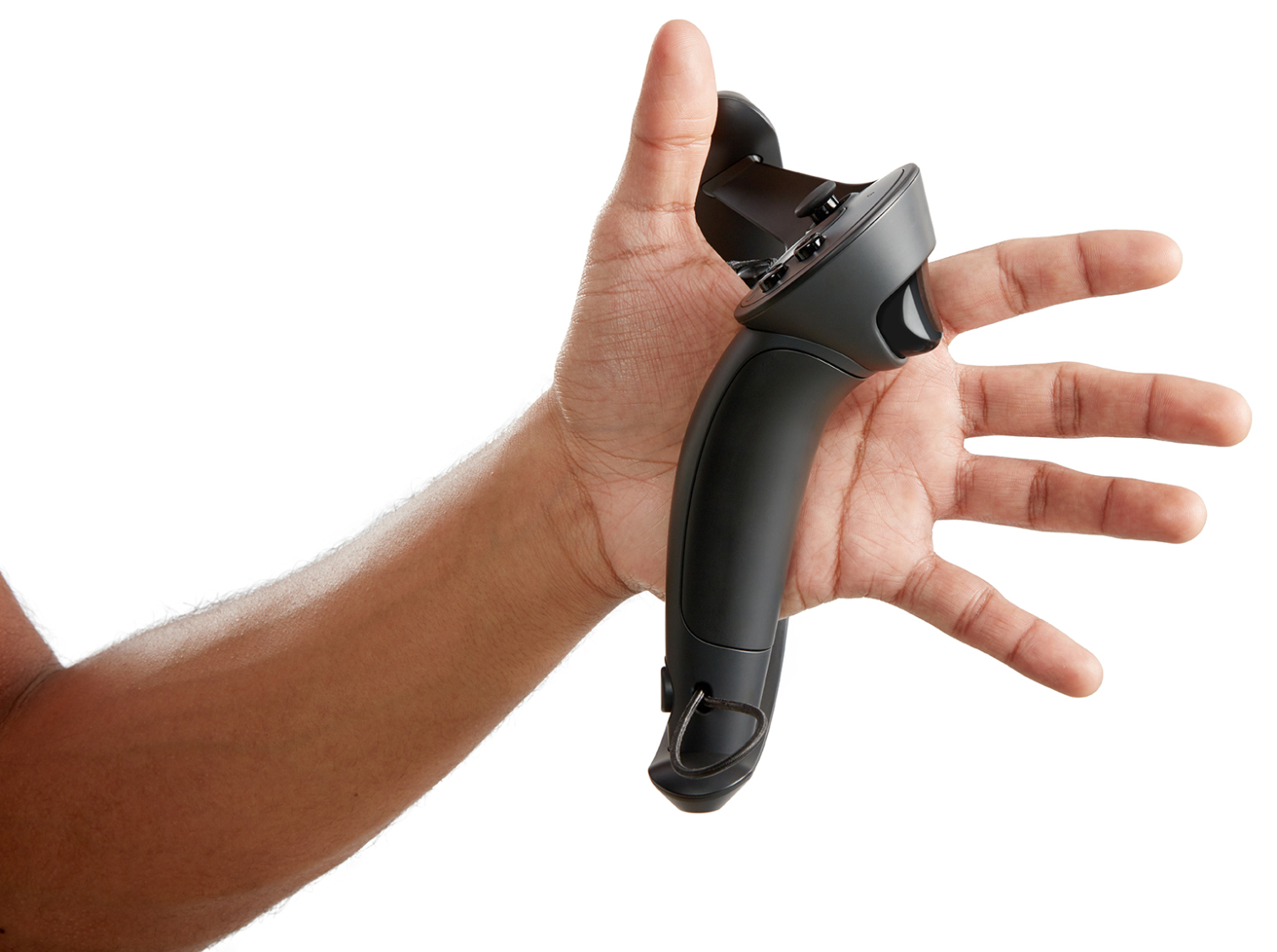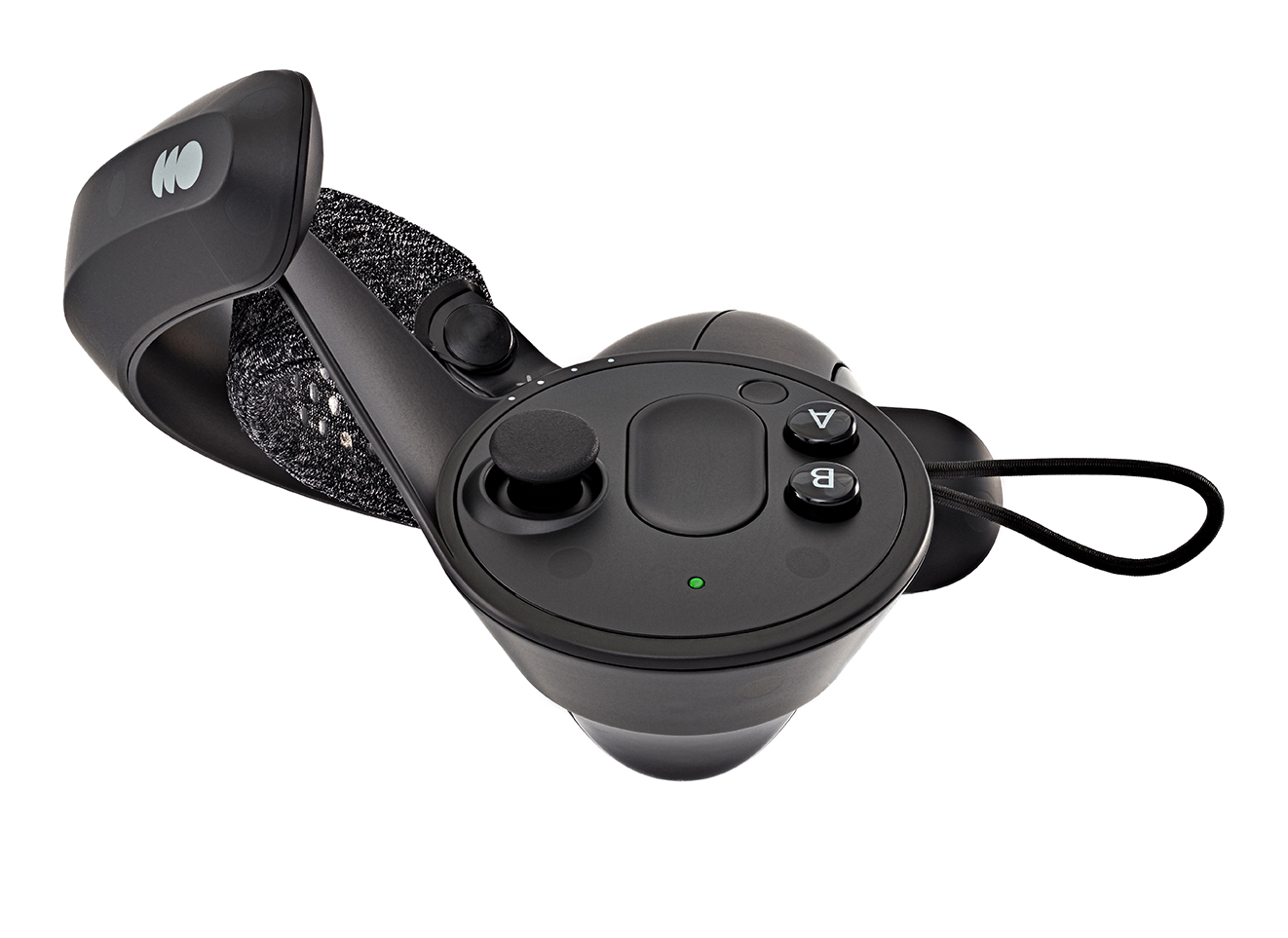Tom's Hardware Verdict
The Valve Index headset offers excellent visuals, best-in-class tracking and top-quality build, and its Index controllers are unquestionably the best solution for interacting with virtual worlds.
Pros
- +
RGB subpixel array eliminates screen-door effect
- +
Wider FOV than comparable headsets
- +
Excellent audio quality
- +
Customizable
- +
Very soft cushion
- +
Sturdy construction
Cons
- -
Very heavy
- -
Less comfortable than the HTC Vive Pro
- -
Cushions are glued on
- -
Expensive
Why you can trust Tom's Hardware
Editor’s note: This article was originally published on August 9, 2019, but we weren’t able to give it a full rating due to technical issues with our review sample. We’ve since received a new, working headset and have updated the review with more testing and a score.
Meet the Valve Index VR
Valve is finally stepping out of the shadows to claim its place in the VR hardware market, and it’s aiming straight at the high-end. The PC-connected Valve Index is currently one of best VR headsets on the market. That experience is only amplified by the included Index controllers, especially when compared to those of first-generation VR headsets.
Valve’s new headset is a big improvement in both design and features over competing headsets in consumer VR. My first impressions of the headset were very positive. The build quality is about as good as it gets, the material selection is fantastic and the device’s feature set leaves practically nothing to be desired.
Valve Index VR Headset Kit Specs
| Screen | Dual LCD, canted lenses |
| Resolution | 1440 x 1600 per eye (2880 x 1600 combined) |
| Subpixel Rendering | RGB subpixels |
| Refresh Rate | 80, 90, 120 or 144 Hz |
| Field of View | Adjustable up to 130 degrees |
| Tracking | SteamVR 2.0 sensors, compatible with SteamVR 1.0 and 2.0 base stations |
| Eye adjustments | 58-70mm IPD mechanical eye relief |
| Connections | 5m tether, 1m breakaway trident connector, USB 3.0, DisplayPort 1.2, 12V power |
| Cables | Tether cable with DisplayPort 1.2 and USB 3.0; 2x USB controller charging cables; 2x 4.5m base station power cables |
| Face Cushion | Permanently affixed to removable facial interface, foam covered in anti-microbial microfiber cloth |
| Cameras | 960 x 960 pixel, global shutter, RGB (Bayer) |
| Extra | 2x SteamVR 2.0 Base Stations and stands w/mounting hardware; 2x Index controllers; 2x controller lanyards; Cleaning cloth; Regionalized power adapters; Headset power supply;Headset cradle adapter (for smaller heads) |
| Weight (without cable) | 1.78 pounds (809g) |
| Price | $999 (including 2 controllers and 2 base stations); $499 (headset only) |
Technical Difficulties
In the week leading up to the Index’s release in August, our Index headset started to malfunction. SteamVR kicked an error that indicated that it couldn’t detect the headset after rebooting the software to initiate a refresh rate change.
After learning of our headset troubles, Valve sent us a replacement Index, which has works flawlessly and has continued to shine after several months of regular use.
The problem with the first unit was likely a unique case. I haven’t found any reports of other Index headsets failing as ours did.
However, it’s worth noting that the Valve Index subreddit reveals many threads with people complaining about trouble with their headsets and the controllers. Many reported issues with the thumbsticks on the Index controllers; others reported problems with the displays inside their headsets, such as seeing horizontal or vertical lines on one or both screens. To their credit, we found a few examples of people who went through five or more RMA replacements without hassle.
Get Tom's Hardware's best news and in-depth reviews, straight to your inbox.
What’s In the Box?
The Index product line is available as an a-la-carte upgrade solution for existing HTC Vive and HTC Vive Pro owners, with the Index headset, Index controllers and second-generation Lighthouse base stations available individually for $499, $279 and $149, respectively. Valve also sells bundles with the headset and controllers together for $749, or complete packages that also include two base stations for $999. Our review is based on a full kit.
The first thing that I noticed about Valve’s new headset is that every detail exudes an air of quality. Everything from the presentation of the packaging to the materials used is top-notch.
In addition to the two base stations, two controllers and the headset, you get a tether cable and appropriate power cables for the base stations and headset. If you live in the U.S., you should receive power cables with the North American plug configuration. Overseas customers should receive plugs with two interchangeable ends for compatibility across the EU. Valve also includes a pair of wall mounts for the base stations.
The complete Index kit includes almost everything you could need except for one glaring oversight. The Index controllers include internal rechargeable batteries, like the Vive wand controllers and Valve included a pair of USB Type-C cables to charge them; however, we did not find wall plugs in the box to charge the controllers.
It is annoying when companies assume that customers already have a USB charger, let alone two. I used the chargers that came with my Vive, but if I didn’t have that matching pair I would have been forced to charge my controllers one by one or with charge plugs from different manufacturers. I would prefer to know that both controllers charge at the same pace, with chargers that the hardware manufacturer specified.
High-Quality, but Heavy, Build
There's no way to sugar coat it; the Index is weighty (1.78 pounds/809g). If you were hoping for a super-light headset, look at the HP Reverb (498g). The Index headset isn't quite as heavy as the Vive Pro (1,017g), but the weight isn’t as well balanced, so it feels more substantial than the Vive Pro. Valve’s headset also includes a heavy-duty data cable, which adds to the perceived weight. Over 800g is not an insignificant amount of weight for your neck to carry.
Despite the disappointingly heavy frame, Valve’s Index is a big step forward for head-mounted display (HMD) design. Even before plugging it in, I could tell that it is the most well-built headsets I’ve ever tested. Valve’s material selection is top-notch, and I find it hard to complain about most of the company’s design choices.
Valve’s Index headset gave me a bit of deja-vu but in a good way. It reminded me of my experience with HTC’s Vive Pro headset, which remained my pick for best VR headset from the day that I received it until the day that I received the Index. When I evaluated HTC’s Vive Pro last year, I was immediately impressed with the build quality and the industrial design of the device. Now that I’ve spent a few weeks with Valve’s Index, I can’t help but think that the Vive Pro feels cheap in comparison.
Mechanical Head Strap
The Index has a rigid, mechanically adjustable head strap that resembles the Vive’s Deluxe Audio Head Strap upgrade. The head strap wraps around the back of your head and includes a lower section that cradles to the bottom of your skull for a secure fitment. The rear of the strap comprises a small dial that controls the size adjustment. The size adjustment feels smooth and precise, and unlike some headsets that we’ve tested, the mechanism feels like it includes precision gears that would last a long time.
Valve’s Index also includes an overhead fabric strap with a Velcro adjustment that helps relieve your cheeks of the stress of the headset’s weight.
Soft, Anti-Microbial Cushions
Apart from the precision mechanical adjustments that help provide a comfortable fitment, Valve sourced high-quality material for the cushions. From a distance, the pattern of the fabric makes it look like the Index features firm closed-cell foam cushions, but it’s one of the softest materials that I’ve ever put on my face.
The cushions are made of a thin, breathable foam material wrapped in an anti-microbial microfiber cloth. They're among the most comfortable of any VR headset that we’ve tested, but the company made a critical mistake with the cushion design; the cushions are not removable.
Replaceable Facial Interface
Technically, you can replace the facial interface to get a fresh cushion (Valve sells 2-packs for $39.99), but that would require replacing the entire plastic frame, which includes the flaps that block light at your nose. Fortunately, the facial interface is incredibly easy to remove. The component is secured with four magnets, so give the mask a light tug, and it will pop right off.
Valve said it would release the specifications for the interface, which would enable companies such as VR Cover to create aftermarket replacement, but it’s not too much to ask for a Velcro solution to enable cheap cushion replacements.
Permanent Rear Cushion
The cushion on the rear of the head strap is an entirely different story. But it can’t be removed at all, so when the cushion gets sweaty after an active workout in a game like Box VR, it won’t be easy to clean.
Valve includes a potential solution for the sweaty rear cushion in the box. The headset comes bundled with a foam rubber spacer, which slips into the opening below the dial. The spacer makes it possible for people with smaller heads to wear the Index, but it could double as a sweat barrier if your head is small enough to make use of it.
Goodbye Headphones, Hello Ear Speakers
The Index headset has integrated speakers, so you don’t need to fumble with additional headphones. Unlike other VR devices, Valve’s new headset doesn’t include traditional over-the-ear headphones. The Index includes innovative mini open-backed speakers that hover near your ears but don’t touch them.
I didn’t expect Valve’s bizarre speaker system to work well, but it didn’t take long to convince me otherwise. The speakers produce clear audio, with plenty of volume. Because they hover away from your head, you can still hear surrounding noise, like if someone is calling your name. Yet, the sound quality is so good you don’t have to worry about ambient noises impeding your immersion.
Valve provided an in-depth look at the tech, development and logic behind these speakers. You can read it here.
Adjustable IPD
The left side of the headset features a dial like the one on the rear, but this one controls the Index’s lens relief system, which allows you to bring the lenses as close as possible to your face. The Index’s lenses sit in tower-like structures that protrude towards your face from inside the visor. The dial allows you to adjust how far the lenses protrude from the inside. Valve recommends bringing the lenses as close to your eyes as possible to maximize the field of view (FOV) that you can see. There can be as much as a 10-degree difference in FOV with a 1cm distance adjustment.
In addition to the lens’s depth, the Index supports mechanical IPD (interpupillary distance) adjustment. On the bottom left side of the visor, you’ll find a slider that controls the distance between the two lenses. It supports 58-72mm pupil distances. Once again, the mechanical adjustment feels like it’s constructed with precision parts that would last a long time.
The Controllers Formerly Known as Knuckles
The Index controllers are arguably the most exciting part about Valve’s foray into VR hardware. In late 2016, Valve revealed the prototype of what would eventually become the Index controllers. These innovative input devices enabled a new, even more immersive form of interaction with virtual objects—but they were available only to a small group of select developers. Until now!
Unlike every input device that you’ve ever used for a video game, you don’t need to hold the Index controllers. They strap to your hand, which gives you the freedom to let go of them without worrying about dropping them. This enables actions like throwing a ball or opening your hand to pick something up.
The Index controllers have straps that secure the handle to your palm. The strap wraps around the outside of your hand and uses a drawstring to secure it in place. The top of the strap can be adjusted to 4 different positions and features a swivel hinge to accommodate different size and shape hands.
The Index controllers also feature capacitive touch sensors in the handle and on the face buttons for animated finger movement. The handle has sensors for your pinky, ring and middle fingers; the trigger has a sensor for your index finger and the A, B, touchpad and thumbstick inputs have sensors for your thumb. The thumb sensors also give you two thumb positions; the A and B buttons place your thumb beside your hand and the thumbstick puts your thumb above your hand.
Additionally, the Index controllers have pressure sensors to detect how hard you squeeze the handles, allowing supporting games to differentiate between a light grip and a firm grip.
MORE: Best Virtual Reality Headsets
MORE: All Virtual Reality Content
MORE: Virtual Reality Basics
Kevin Carbotte is a contributing writer for Tom's Hardware who primarily covers VR and AR hardware. He has been writing for us for more than four years.
-
Giroro "but if I didn’t have that matching pair I would have been forced to charge my controllers one by one or with charge plugs from different manufacturers. "Reply
Can't you just charge the controllers with your PC? These aren't high power phones with huge batteries. The 900mA you get from USB 3.0 is probably fine to charge the controllers' 1100maH batteries in a couple hours. . -
kcarbotte ReplyGiroro said:"but if I didn’t have that matching pair I would have been forced to charge my controllers one by one or with charge plugs from different manufacturers. "
Can't you just charge the controllers with your PC? These aren't high power phones with huge batteries. The 900mA you get from USB 3.0 is probably fine to charge the controllers' 1100maH batteries in a couple hours. .
Yes, you can charge the controllers off your computer's USB ports, but you would need to have two USB ports free to do that. Not everyone does, including me. My test system doesn't have a front panel, so I have to rely on the ports on my motherboard, of which there are only 5. -
ntsarb Unfortunately, after a long playing session with the Valve Index (3 hours), it crashed with a gray screen, followed by loss of contact with peripherals and the error messages reported by the author of Tom's Hardware article. Very disappointing, really. Looks like there is a hardware or firmware issue, I hope it's not because of overheating, as that would be a major design/manufacturing failure of the product and impossible to resolve in practice for existing owners of the HMD.Reply
Screenshots here: a/tKnWQ2x and here: Xi9N6S1View: https://imgur.com/Xi9N6S1
View: https://imgur.com/a/tKnWQ2x -
hareaza Replyadmin said:The Valve Index VR headset and controllers offers an excellent visual experience and best-in-class tracking, and the Index controllers are the best out there.
Valve Index VR Headset and Controllers Review: First Benchmarks : Read more
I am using a modded Vive Pro with biconvex lenses designed by a company called VRinnovations. They managed to create lenses that need no software tinkering in order to get rid of distortion. The image quality has been revamped to a degree I did not think it was possible as crepuscular rays are simply gone. I would recommend doing this lense swap in order to make a recommendation based on this mod, and ask why vr manufacturers continue using fresnel lenses on their headsets. -
Windgineer I too am experiencing the overheating issue. I assume it's rare as googling the issue only pops up with this article! I'm crossing my fingers it's a firmware fix, rather than a faulty device.Reply -
Nerijus_1 Reply
Hi, could you please give a direct link to this mod?hareaza said:I am using a modded Vive Pro with biconvex lenses designed by a company called VRinnovations. They managed to create lenses that need no software tinkering in order to get rid of distortion. The image quality has been revamped to a degree I did not think it was possible as crepuscular rays are simply gone. I would recommend doing this lense swap in order to make a recommendation based on this mod, and ask why vr manufacturers continue using fresnel lenses on their headsets. -
warezme I returned mine in like a week. The sound quit working after the first update and the base stations whined more then entitled teenagers. I couldn't deal with all the issues having paid so much. It was a worse experience than my old HTC Vive.Reply -
jkflipflop98 I use a USB 3.0 hub with 10 ports on it. I use that to recharge the controllers. Surely you can expense ~$20 to get one.Reply -
mpdugas Best VR setup: Vive Pro + HTC Wireless + Index Controllers + version one base stations.Reply
Best audio, most comfortable, same FOV for those wearing glasses, same screen resolution, best controllers, V.1 bases perfectly adequate for small room space availability and wireless, (which no one else does).





